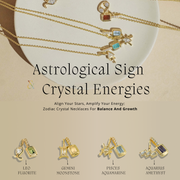Emerald History and Symbolism
Ancient times
Around 1500 BC, ancient Egypt was the first place where emeralds were mined.
Cleopatra, the Egyptian queen, regarded them as a symbol of power. She not only used them in jewelry and palace decorations, but also gave them to allies as diplomatic gifts.
In the Roman period, emeralds were given the meaning of "the stone of hope". Scholar Pliny praised its green color for representing spring rebirth;
Iin the Hindu tradition of the same period, offering emeralds to Lord Krishna could bring blessings of "soul knowledge".
Classical period to the Middle Ages
Emeralds were included in the religious context in the Middle Ages in Europe:
The Bible records that they may decorate Aaron's breastplate, and the Book of Revelation describes the city of heaven as being based on emeralds, symbolizing "the power of faith in adversity".
The Arab world associates it with the planet Mercury, believing that it can enhance wisdom and prophecy;
In European folklore, emeralds are used as amulets to resist epilepsy and "evil eyes".
The Roman Emperor Nero even used it to relieve eye diseases.
Colonial Era
Spanish conquerors discovered the Inca Empire's emerald deposits in Colombia, plundered a large number of them and shipped them to Europe, replacing Egypt as the main source.
The dark green gems from the Muzo mine in Colombia quickly became royal treasures, such as the "Montezuma Emerald" given to the colonists by the Aztec leader Montezuma.
At this time, emerald became a core commodity in intercontinental trade, and European nobles inlaid it in crowns and scepters to strengthen its status as the "Stone of the Emperor".
Modern Symbols and Mining Expansion
The era of scientific mining has arrived: new mineral sources have been discovered in the Ural Mountains in Russia, the Habach Valley in Austria, and Zambia.
Emerald is designated as the birthstone of May, symbolizing true love and rebirth;
The price of Colombian emeralds has soared due to their scarcity (such as the Rockefeller Emerald sold for $5.5 million in 2017), and the emergence of synthetic technology (hydrothermal method in the 1970s) has lowered the threshold for obtaining pure gems.
Contemporary Cultural Significance
Emerald continues the symbol of "spiritual healing stone", and green is associated with natural growth and emotional balance, and is used to activate the heart chakra in meditation.
The emerald's legendary history (such as Taylor's pendant, which sold for $6.58 million at auction) and its diverse origins (new mines in Ethiopia in 2016) together maintain its status as a global symbol of power, wisdom and eternal beauty.
From the Egyptian desert to the Andes Mountains, emeralds continue to reflect the human pursuit of natural power and spiritual sublimation through the "green myth" that runs through civilization.
Where are Emerald found?

Emeralds are mined all over the world (Pakistan, Afghanistan, Russia, Australia, the United States), but deposits in three countries, Colombia, Brazil and Zambia, are by far the main emerald sources.
Colombia is by far the world's largest emerald producer, accounting for 50-95% of world production, depending on vintage, source and grade. Colombia's emerald production has increased dramatically over the past decade, increasing by 78% from 2000 to 2010.
The three main emerald mining areas in Colombia are Muzo, Cosquez and Chivor. Rare "Trapiche" emeralds are found in Colombia, characterized by dark inclusions with ray-like patterns.
Zambia is the world's second largest emerald producer, with deposits in the Kafubu River region, about 45 km southwest of Kitwe, accounting for 20% of the world's gem-quality emerald production in 2004. In the first half of 2011, the Kagemu mine produced 3.74 tons of emeralds.
Zambian emeralds are more bluish than Colombian emeralds and have a slightly grey tint, whereas Colombian emeralds do not have this colour. Zambian emeralds may be coloured by the presence of vanadium, whereas Colombian emeralds are usually coloured by the presence of chromium.
What color is Emerald?

The color of emerald is one of the important factors affecting its price. Generally, it can be simply divided into light green, bright green (the highest grade), emerald green (the most popular) and dark green.
Some professional appraisal institutions will classify "Muzo Green" as the highest grade of its color. Muzo Green means that the saturation and brightness of the color reach the level of "Vivid Green", that is, its green color is pure and rich.
n addition, Muzo Green must meet multiple conditions such as only being produced in Colombia, specified cutting quality, and high standard purity to be rated as "Muzo Green".
Because the conditions for "Muzo Green" are too harsh, some organizations have proposed the color standard of "Verdant Green", which means that regardless of the origin, high-quality emeralds that reach a bright green color are called "Verdant Green".
Pure Emerald

Emeralds that are predominantly green are the most sought after, and Columbia emeralds are known for their intense medium to dark green saturation.
One of the key elements to achieving a pure green emerald is that the light passes through the emerald unimpeded by inclusions, showing a uniform color.
In other words, emeralds need to achieve a high level of purity to be defined as pure green on the Gemological Institute of America's continuous color ring diagram.
Blue-green Emerald

In the emerald color family, "blue-green emerald" is an emerald with a slightly blue hue, and Zambia emeralds are famous for this blue hue.
Some jewelers believe that this feature gives the gemstone more depth and is more interesting to look at, so the price will be higher.
Emeralds from Africa contain more iron, and are cooler in color and harder than those from Colombia.
Yellow-green Emerald

Finally, we will introduce the yellow-green emerald on the warmer end of the spectrum.
In fact, any emerald color that goes beyond the "yellow-green" range and enters the yellow area, or that goes beyond the "blue-green" range and enters the blue area, cannot be classified as emerald, and will be defined as heliodor and aquamarine respectively.
Yellow-green emerald has a slightly yellowish base color, and because it is slightly less saturated, the market demand for it is not high.
Types of Emerald
Brazilian Emerald

Brazilian emeralds are usually yellow-green in color.
They are known to not be as deep green as Colombian emeralds, but are known for their clarity.
The lighter hue of Brazilian emeralds accentuates this feature, allowing more light to enter the stone.
Zambian Emerald

Emeralds from Zambia, South Africa, are extremely unique in appearance.
Zambia is the world's second largest emerald producer, and its blue-green emeralds are cooler and darker in hue than Colombian and Brazilian emeralds.
Zambian emeralds tend to have certain inclusions, such as flakes of minerals that were trapped inside the stone during the formation process.
However, these inclusions are still sought after by consumers seeking the unique "melancholy" look of Zambian emeralds.
Colombian Emeralds

Colombian emeralds are currently the most sought after emerald in the industry. This is mainly because they have a warm emerald green hue, between blue-green and yellow-green, which seems to better meet consumer demand.
Emeralds from Colombia also tend to have fewer fragments and inclusions. The world's rarest emeralds, with their unique bright green color and high clarity, are all produced in Colombia.
Interestingly, the famous "emerald cut" originated in the Muzo mines of Colombia in the 16th century. This cut was used to create depth and visual effects in gemstones and was invented to prevent chips from appearing when cutting.
Cat's Eye Emerald

Cat's Eye Emeralds have a very special feature where neatly arranged inclusions in the gemstone emit a shining line through the gemstone.
This optical effect is called the "cat's eye effect".
The cat's eye effect is not limited to one part of the world and is found in deposits all over the world, but emeralds with this feature are very rare.
Trapiche Emerald

Trapiche Emeralds are the rarest of all emeralds. They are found only in a few mines in Colombia and contain shale inclusions that radiate outward from the core of the gemstone.
Curiously, in trapiche emeralds, six of these dark rays are usually observed.
Gemologists and geologists have not yet reached a consensus on the formation mechanism of these gemstones. This little-known emerald got its name from a Spanish sugar factory due to its similar pattern.
Lab-grown Emerald

Synthetic emeralds are grown in a laboratory using equipment that perfectly mimics the natural formation process. The only differences are:
- The formation time is significantly shorter (a few months instead of hundreds of years)
- Fewer resources are required for extraction (water, processing chemicals and miners)
- The environment is highly controlled and no random factors (surrounding minerals, the impurities are less than natural emeralds)
In addition, the chemical properties, hue, saturation and purity of lab-grown emeralds are comparable to Colombian emeralds, so the price is more affordable.







